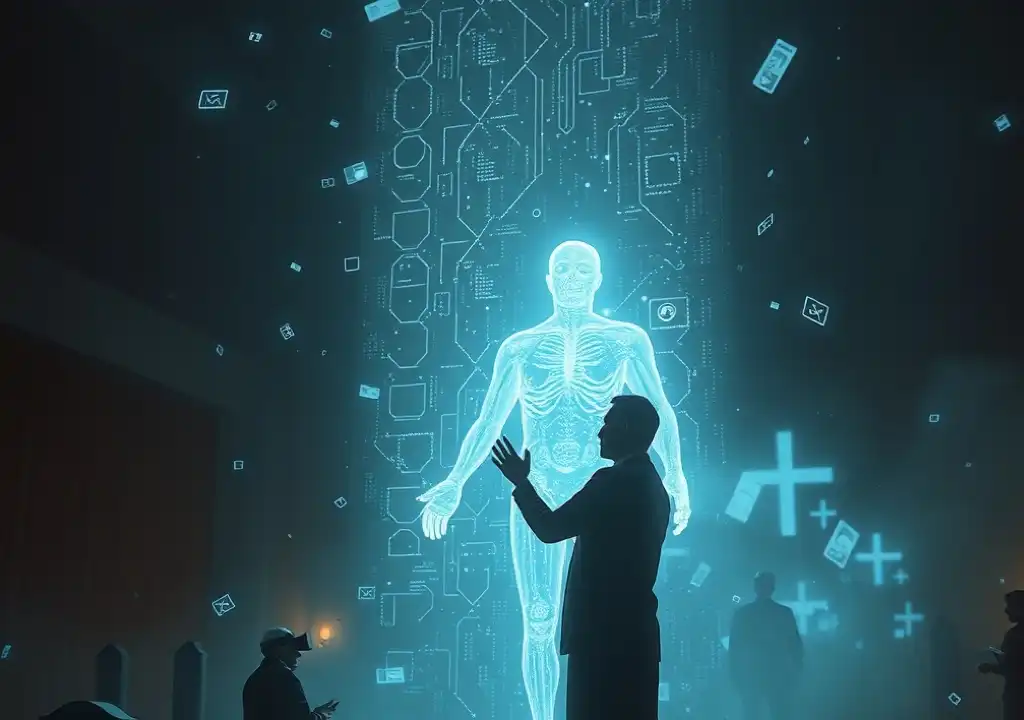As artificial intelligence grows, it’s increasingly being used to bring the dead back to life, sparking debate about the consequences of such technology.
In a world where AI can revive the deceased, grief takes on a whole new meaning. From Canadian artist Drake utilizing AI-generated Tupac Shakur vocals to Indian politicians giving speeches posthumously, AI is blurring the lines between life and death. While these “resurrections” are making waves in entertainment and politics, they are also setting the stage for potentially controversial uses, allowing people to interact with the deceased. But how exactly do these AI “resurrections” work, and do they have a dystopian edge?
What Are AI “Resurrections”?
AI projects have started to create digital “resurrections” of individuals who have passed away, allowing people to converse with them. Typically, users supply AI tools with data such as texts, emails, or personality-based answers. The AI processes this information to interact as if it were the deceased. A well-known project in this area is Replika, a chatbot that mimics a person’s texting style. Additionally, some companies enable users to see videos of the deceased as they speak with them.
For instance, StoryFile, based in Los Angeles, allows people to speak at their own funerals. Before passing, individuals can record videos sharing their life story, and during their funeral, attendees can ask questions. AI then selects answers from the pre-recorded footage. Another example is Eternos, which creates digital afterlives by allowing people like 83-year-old Michael Bommer to leave behind a digital version of themselves for their family to interact with.
Do These Projects Help People?
In 2020, a video of a South Korean mother reuniting with her deceased daughter in virtual reality sparked an intense debate about whether such technology helps or harms its users. Developers of these AI projects argue that they offer relief to those grieving, providing a means to cope with profound trauma. Jason Rohrer, founder of Project December, which also recreates conversations with the dead, explains that many users see these tools as a way to help them process their grief.
For some, the bots help them find closure by allowing them to express words left unsaid to a loved one who died unexpectedly. Eternos’s founder, Robert LoCasio, emphasized that these tools help people preserve their stories and assist families in moving forward.
The Downsides of AI “Resurrections”
While some view these services as helpful, experts caution about their potential psychological impact. Alessandra Lemma, a consultant at the Anna Freud National Centre for Children and Families, raises concerns that grieving is an essential part of healing, and AI resurrections may delay this process. If people keep revisiting these virtual connections, they might remain in a state of emotional “limbo” instead of learning to accept their loss.
One service, YOV (You, Only Virtual), markets a perpetual connection with the deceased, raising questions about the ethical implications of maintaining such ties. Rohrer’s Project December addresses this by limiting the conversation time to a few hours, ensuring users say their final goodbyes before time runs out.
Are These Technologies Natural?
Though these AI services may seem like something out of a science fiction show, supporters argue that they represent a modern way of preserving life stories, filling the void left by lost family storytelling traditions. Lemma compares this to how parents used to leave behind physical items to pass down to their children. LoCasio from Eternos echoes this sentiment, saying that capturing and sharing life stories is one of the most natural human practices.
Privacy and Safety Concerns
Experts warn that using such services could compromise privacy, as personal data like text messages and photos might be accessed by third parties. While services like Rohrer’s Project December and LoCasio’s Eternos assure users of strict privacy controls, privacy remains a concern, particularly with large corporations or for-profit entities. There’s also the risk of companies using AI resurrections to market products to grieving individuals by mimicking the voice of a deceased loved one.
Renee Richardson Gosline, a senior lecturer at MIT Sloan School of Management, highlights the problem of “pseudo-endorsements” when companies use a deceased person’s digital resurrection for commercial gain without their consent.
Additional Concerns Over AI Chatbots
The very existence of AI services aimed at grieving people raises concerns about their ethical use, especially when big tech companies enter the market. Gosline points out that these companies are known for their “move fast and break things” philosophy, which often results in vulnerable individuals being harmed first. Another issue is the environmental impact of AI technologies. Large language models (LLMs) that power AI chatbots require significant energy and water resources for cooling data centers, adding to the growing carbon footprint of the tech industry.
Gosline acknowledges that while there is no perfect solution, leaders and scientists must consider the world they are creating. They need to ask themselves: “Do we need this?”

